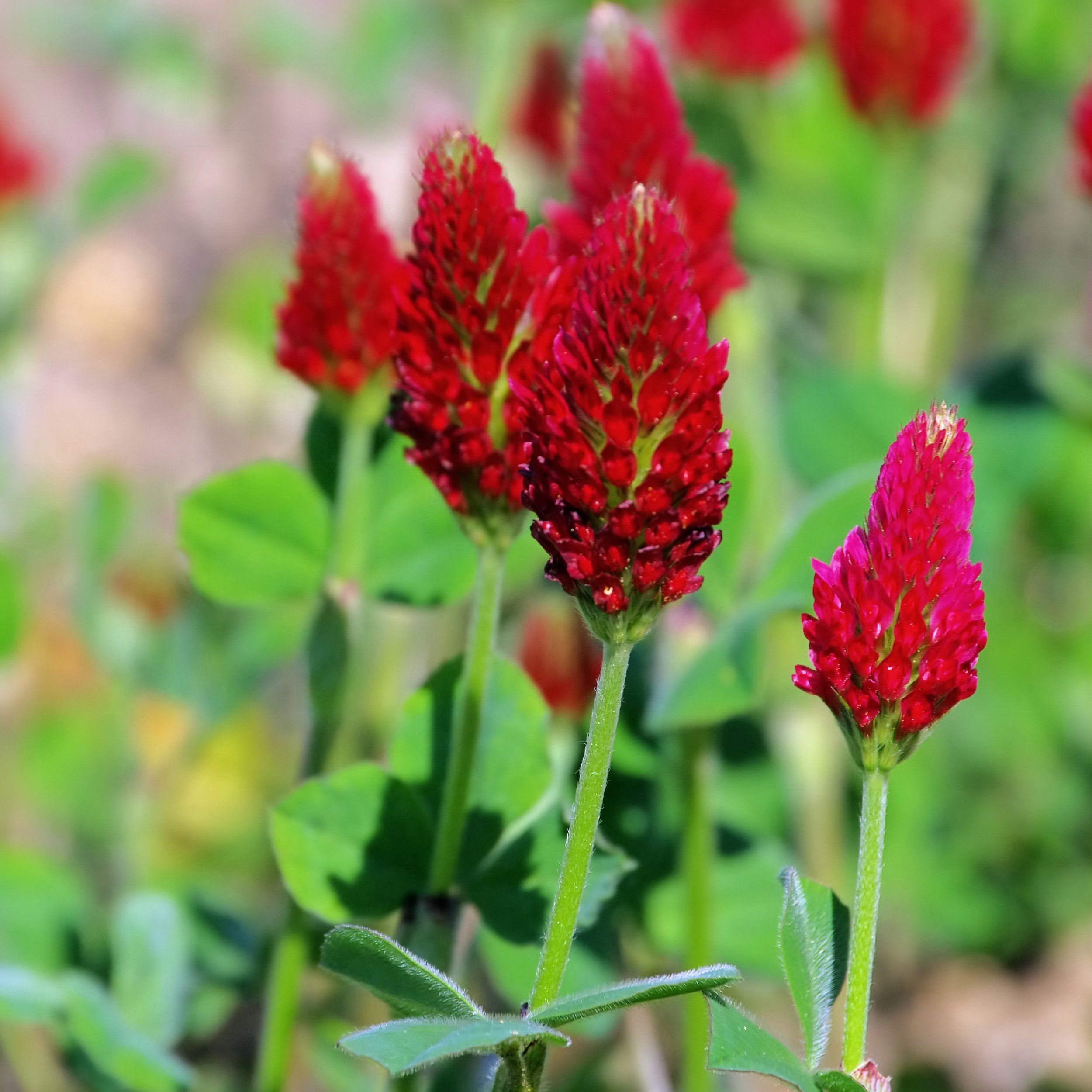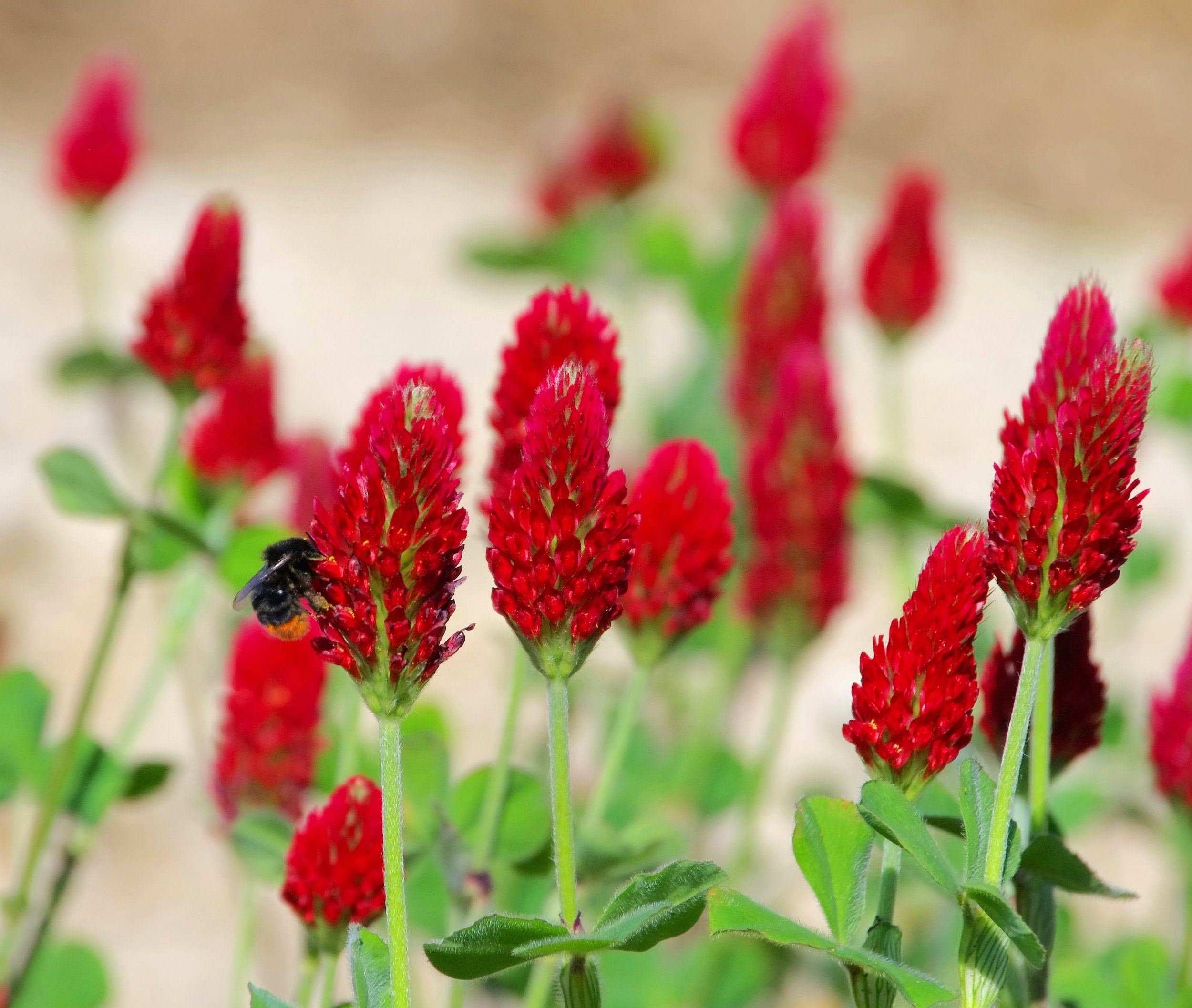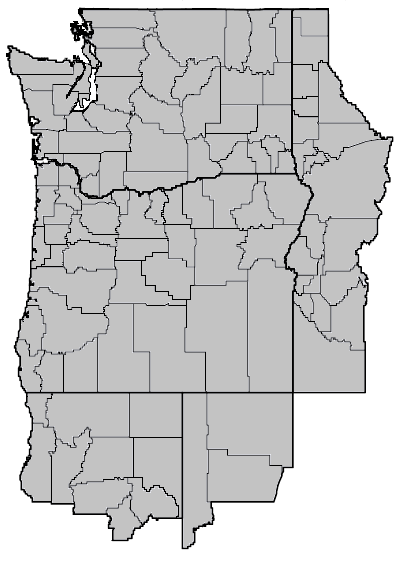Trifolium incarnatum (Crimson clover)
Short to medium statured, nitrogen-fixing annual legume with long bright scarlet flowers. Prefers fertile, well-drained sand to clay soils. Intolerant of poor drainage and high alkalinity. Acidity tolerance is higher than White clover (T. repens) and Red clover (T. pratense). More productive at lower temperatures than most other clovers; popular winter annual pasture in many southern states. Use for hay, pasture and as a silage companion crop. Less bloat risk than white clover or Alfalfa (Medicago sativa). Also use for firebreaks, green manure and as a self-seeding, weed suppressing cover crop in vineyards and orchards. Excellent in wildlife food plot mixes, including deer and wild turkeys. Flowers attract native bees, honeybees and beneficial insects. May become weedy, invading nearby areas; till, cut or graze before seed-set where necessary. Varieties listed below.
DISTRIBUTION / ADAPTATION
INFORMATION & ATTRIBUTES
Family: Fabaceae
Duration: Annual
Growth Habit: Forb
Native Status: Introduced
Growth Form:
Mature Height: 12in. - 36in.
Bloom Color: Red
Bloom Period:
Annual Precipitation: in.
Drought Tolerance:
Shade Tolerance:
Fire Resistance:
Fire Tolerance:
Nitrogen fixation:
Bloat:
SOIL ADAPTATION
Coarse Texture:
Medium Texture:
Fine Texture:
Salinity Tolerance:
CaCO3 Tolerance:
pH Range:
SEEDING NOTES
Seeds per Pound:
Seeding Rate: lbs/acre
Season:
Days to Germination:
VARIETIES
Dixie - Developed for improved reseeding from strains exhibiting excellent reseeding ability, high forage yields and a high percentage of hard seed, helping to delay self-seeded germination until fall when conditions are most favorable. (Released 1953)



